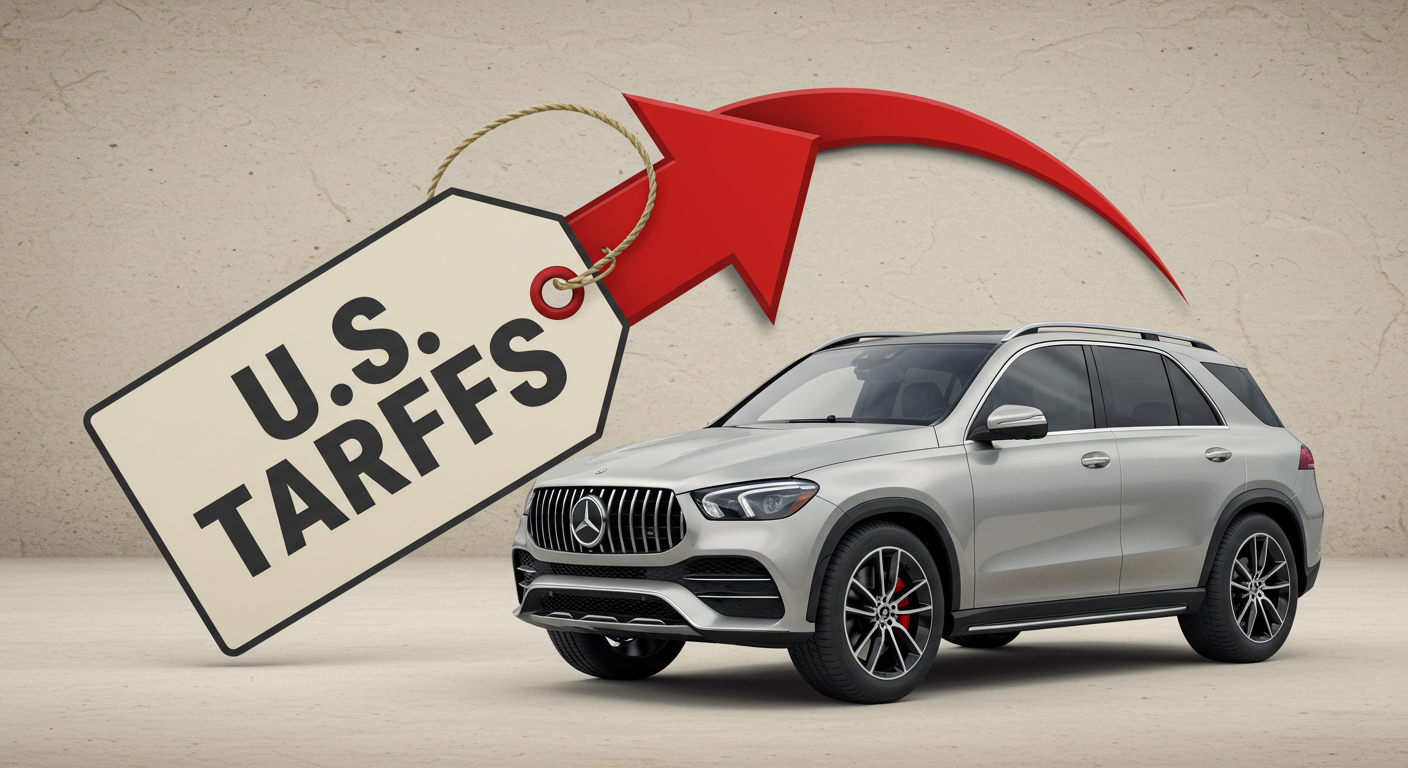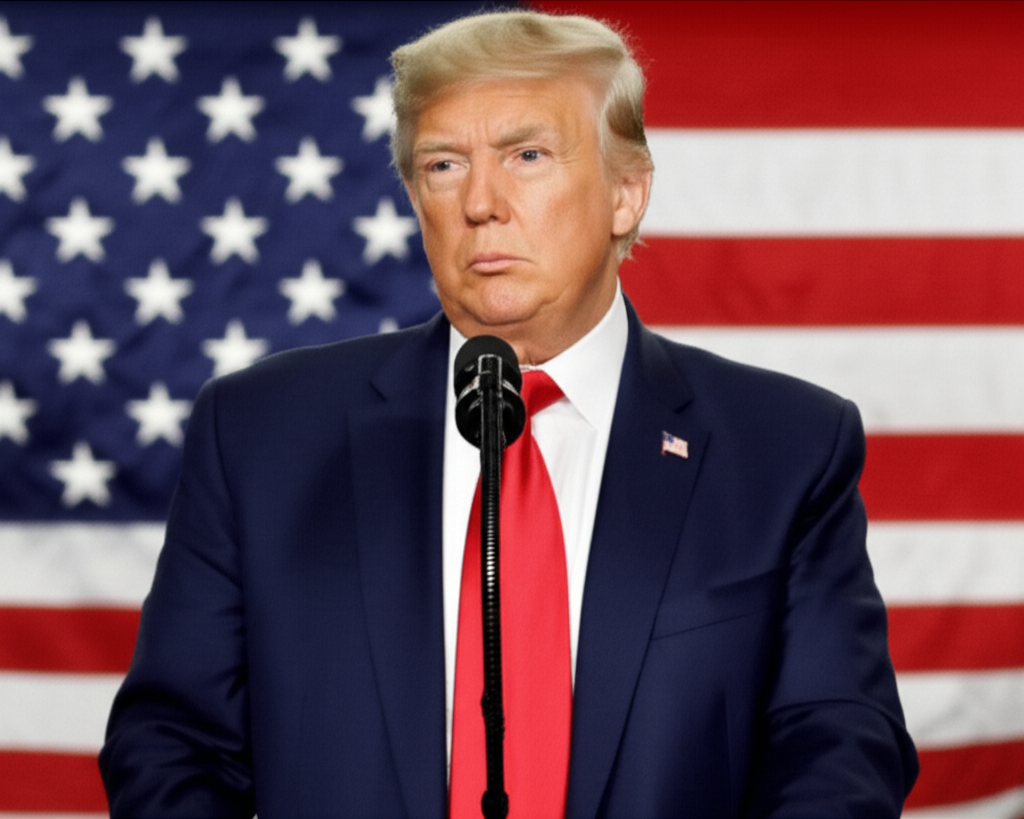Mercedes-Benz Sales Challenges: Tariffs & China Woes Hit Hard

Mercedes-Benz Sales Challenges: Why Tariffs & China Woes are Hitting Hard
For decades, the three-pointed star of Mercedes-Benz has symbolized automotive excellence, luxury, and robust sales. However, the German auto giant is currently navigating significant turbulence. Recent quarterly reports reveal a concerning dip in vehicle sales, raising questions among investors and enthusiasts alike. These are not isolated Mercedes-Benz sales challenges; they are the result of a complex interplay of geopolitical tensions, shifting market dynamics, and internal production hurdles that are testing the brand’s resilience.
This in-depth analysis will break down the primary factors behind the sales decline. We’ll explore the direct impact of U.S. tariffs on flagship models, dissect the hyper-competitive landscape of the Mercedes-Benz China market, and examine how the cooling demand for electric vehicles is affecting the company’s ambitious EV strategy.
The Core Numbers: Unpacking the Sales Dip
According to a recent report from The Wall Street Journal, Mercedes-Benz Group AG experienced a notable drop in vehicle deliveries in its most recent quarter. The company reported selling 510,600 cars and vans, a decrease from the previous year. While the brand has focused on a “top-end luxury” strategy to boost profit margins, this decline in volume cannot be ignored.
The hardest-hit regions were Asia, with a significant drop largely attributed to the Chinese market, and North America. The numbers paint a clear picture: external pressures are mounting. But what specific forces are at play?
Region/Segment Reported Sales Trend Key Contributing Factors
North America Significant Decline U.S. Tariffs on SUVs, Supply Chain Bottlenecks
Asia (China) Significant Decline Intense Local Competition, Economic Slowdown
Top-End Vehicles Moderate Decline Model Changeovers, 48-Volt System Issues
Electric Vehicles Slowing Growth Waning Consumer Demand, Price Sensitivity
E-Tablolar’a aktar
This data underscores that the issues are multi-faceted, stemming from both international trade policies and specific regional market conditions.
Headwind 1: The Impact of U.S. Tariffs on Key SUV Models
One of the most significant blows to Mercedes-Benz’s U.S. sales comes from long-standing import duties. The popular and highly profitable GLE and GLS SUV models, which are assembled in the United States, use engines imported from Germany. These engines are subject to U.S. tariffs on German cars and components, a legacy of past trade disputes.
This creates a difficult choice for the automaker:
Absorb the Cost: This directly eats into profit margins, making each sale less lucrative.
Pass the Cost to Consumers: This raises the sticker price, potentially pushing buyers toward competitors like BMW or Lexus, whose models may not face the same specific tariff structure.
The tariffs effectively act as a penalty on some of the brand’s most important products in a key market. As we analyze the latest luxury car market trends, it’s clear that price sensitivity, even at the high end, is becoming a more significant factor for consumers. These geopolitical factors create an uneven playing field that directly impacts the bottom line and sales volume.
Headwind 2: Navigating the Difficult Chinese Market
China has been a growth engine for luxury automakers for over a decade, but the landscape is changing rapidly. The Mercedes-Benz China market performance has been hampered by several powerful forces.
Firstly, the competition is fiercer than ever. Local EV manufacturers like BYD, Nio, and Li Auto are not just competing on price; they are excelling in in-car technology, software, and features tailored to local tastes. This has eroded the legacy advantage once held by established German brands.
Secondly, a broader economic slowdown in China has dampened consumer confidence, particularly for large purchases. This economic reality, combined with intense competition, makes it a challenging environment to maintain growth. Simply relying on brand prestige is no longer a viable strategy in a market that demands constant innovation and value.
The EV Factor: A Cooling Demand for Electric Vehicles
Mercedes-Benz has invested billions in its “EQ” line of electric vehicles. However, the company is now facing an electric vehicle sales slowdown that is affecting the entire industry. Early adopters have made their purchases, and the next wave of mainstream buyers is proving more hesitant due to concerns about charging infrastructure, range anxiety, and high initial costs.
This trend directly impacts sales of models like the EQS and EQE. While Mercedes-Benz has seen some growth in EV sales, the pace is not meeting the optimistic projections of previous years. This is one of the more significant challenges in the electric vehicle sector that all legacy automakers must confront as they transition away from combustion engines.
Internal Pressures: Supply Chain and Quality Control
Beyond external market forces, Mercedes-Benz is also grappling with internal Mercedes supply chain issues. The company has specifically cited bottlenecks with its 48-volt mild-hybrid systems, supplied by Continental. This single component issue has reportedly delayed the delivery of up to 25,000 vehicles, including the new S-Class and GLC.
These production snags not only delay revenue but can also damage brand reputation. When customers are paying a premium for a luxury vehicle, they expect a seamless purchasing and delivery experience. Persistent delays can lead them to cancel orders and look elsewhere, compounding the effects of the other market challenges.
Looking Ahead: Mercedes-Benz’s Strategy Moving Forward
In the face of these headwinds, Mercedes-Benz is not standing still. The company is doubling down on its “top-end luxury” strategy, focusing on high-margin vehicles like Maybach, AMG, and the G-Class. The theory is that by selling fewer, more profitable cars, they can weather the volume-based challenges.
Furthermore, the company is actively working to resolve its supply chain issues and is expected to roll out new models and product updates to reinvigorate interest. The key will be whether these strategic pivots are enough to counteract the powerful external forces of tariffs and intense market competition, especially as the global automotive industry continues its bumpy transition to electric power.
Conclusion: A Test of Resilience
The recent sales dip for Mercedes-Benz is a clear signal that prestige and history are not enough to guarantee success in the modern automotive market. The current Mercedes-Benz sales challenges are a potent mix of trade policy, fierce competition in China, a cooling EV market, and internal production hurdles. How the Stuttgart-based automaker responds over the next several quarters will be a critical test of its strategic vision and operational agility in an increasingly complex world.
Ready for more expert analysis? Subscribe to our weekly automotive market newsletter for expert insights delivered directly to your inbox.
6) FAQ
1. What are the main reasons for the Mercedes-Benz sales drop?
The primary reasons are U.S. tariffs on imported German car parts which affect SUV prices, intense competition from local brands in the Chinese market, a general slowdown in consumer demand for electric vehicles, and internal supply chain problems with 48-volt systems.
2. How much are the U.S. tariffs on Mercedes cars?
The specific tariffs can be complex, but they generally apply to components, like engines, imported from Germany for vehicles assembled in the U.S., such as the GLE and GLS SUVs. This adds a significant cost that impacts the final price or the company’s profit margin.
3. Who are Mercedes-Benz’s biggest competitors in China?
In China, Mercedes-Benz competes not only with traditional rivals like BMW and Audi but also increasingly with domestic premium EV brands such as Nio, Li Auto, and BYD, which are gaining market share with advanced technology and local market focus.
4. Are electric car sales declining for Mercedes?
While overall EV sales volume is still growing, the rate of growth has slowed significantly. This “cooling” of demand is an industry-wide trend that affects Mercedes-Benz’s EQ line of electric vehicles, falling short of earlier, more aggressive sales projections.
5. What is the 48-volt system issue affecting Mercedes?
Mercedes has faced supply chain bottlenecks for its 48-volt mild-hybrid systems, a key component in many of its modern combustion engine vehicles. This has caused production delays for tens of thousands of cars, impacting their ability to meet demand.
6. Is Mercedes-Benz stock a good buy after this news?
This article provides analysis on sales trends and does not constitute financial advice. Investors should evaluate the company’s full financial reports, its strategy for overcoming these challenges, and broader market conditions before making investment decisions regarding Mercedes-Benz Group AG (MBG.DE) stock.



